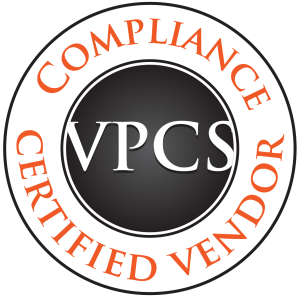It probably wouldn’t surprise you to know that over the last 10 years, we’ve seen the volume of automated clearing house transactions triple.
This is due in large part to consumer-initiated transactions, like those under the standard entry class code WEB (for Internet or wireless network authorizations). Consumers have the control and visibility they want, and the ease of the ACH network provides them with the “do it now” immediacy they crave.
For instance, consumers can go online to pay their credit card bill on the due date using their checking account. The consumer is controlling the date and amount of the transaction “just in time” instead of setting up a recurring payment option, where control and visibility are diminished.
But would you be shocked to learn that while these types of ACH transactions have soared, the business side of ACH has come along a lot more slowly? The main contributing factor for this is simple: businesses do not have the same level of control at their fingertips as consumers do when it comes to ACH transactions.
If a business using an ACH debit block service (to protect against unauthorized charges) wants to let a trading partner debit its account, usually the business must ask its financial institution to set up an ACH filter. This requires the business to obtain the company ID that will appear in the batch header record of the ACH file the trading partner will originate. The business then has to provide that information to its financial institution so the ACH debit can pass through when it arrives. As you can see, this involves a highly orchestrated, labor-intensive and manual process between trading partners and the receiving financial institution.
Compound this with the fact that corporate accounts are given only two business days to dispute fraudulent ACH items classified with an SEC code of CCD or CTX, and it’s no wonder businesses are apprehensive about jumping into the ACH pool. Until business customers can take advantage of the same levels of control as their consumer counterparts, it appears as though we could see ACH business transaction growth continue to limp along.
The trend is even more interesting for direct debit, or PPD, transactions. Since 2004, this type of ACH commerce has grown 30%. That may sound impressive, but pales in comparison to ARC transactions (checks that have been converted by the payee), which have gone from 160,000 transactions a year to 1.862 billion over roughly the same period.
While you can’t isolate just one reason for the relatively glacial pace of PPD, it stands to reason that the lack of consumer visibility and control associated with these types of transactions makes one pause before taking advantage of the immediacy and ease of the ACH network.
The impressive growth in ARC transactions suggests that consumers don’t much care how the check is settled or how quickly it clears. What’s more important to them is that they have the ability to initiate the payment process. In a word: control.
The consumer and business appetite to use the ACH network is alive and well, and they want more from their financial institutions. Nacha, the trade group that oversees the network, has done an excellent job of introducing new SEC codes and defining rules to support safe, creative and innovative uses for ACH (in addition to WEB and ARC, there’s TEL for telephone authorizations; BOC for converted checks received by merchants and processed in the back office; and very soon, health care payments). Most of these have required very little in terms of system modifications to support receipt of these types of transactions. But for the ACH network to continue to thrive, financial institutions will need to make more substantial changes in the near future.
One way financial institutions can make the future a reality today is by adopting same-day settlement, which is now offered by the Federal Reserve System. It will be vital for the continued growth of the ACH network, but it is also required for financial institutions to remain competitive. Of the 21 billion ACH transactions that cleared in 2012, 4.25 billion were cleared directly between several larger financial institution players, leaving 16.75 billion to clear next-day through the ACH operator.
Needless to say, the account holders of financial institutions clearing ACH transactions directly derive benefits that those who are subject to next-day settlement simply can’t realize. We see this with person-to-person transfers using the ACH network, or when an employer initiates payroll direct deposit from one direct clearing bank to an employee who uses another.
Widespread adoption of same-day settlement will level the competitive playing field for all financial institutions and allow all account holders to benefit from expedited settlement. Another way financial institutions can build upon the advantages of same-day ACH settlement is to provide account holders same-day notification and response capabilities for ACH transactions settling to their accounts, allowing them to quickly identify fraudulent activity. (Full disclosure: my company sells such services.)
The future of ACH payments looks bright as long as all users of the network – consumer and business – are afforded the same levels of visibility and control for all types of ACH transactions, not just those initiated by the consumer. As a side benefit, financial institutions can experience new levels of engagement with their accountholders, opening new opportunities for other levels of growth.
Debbie Peace is the CEO of ACH Alert, a vendor of fraud prevention technology.










